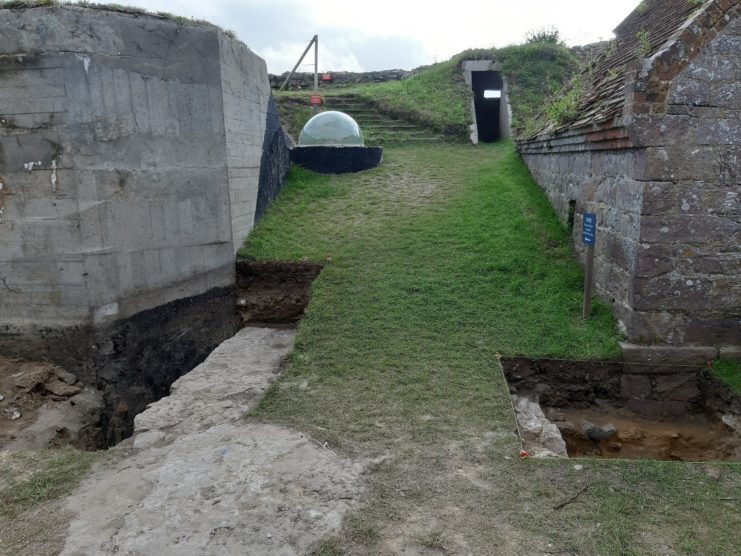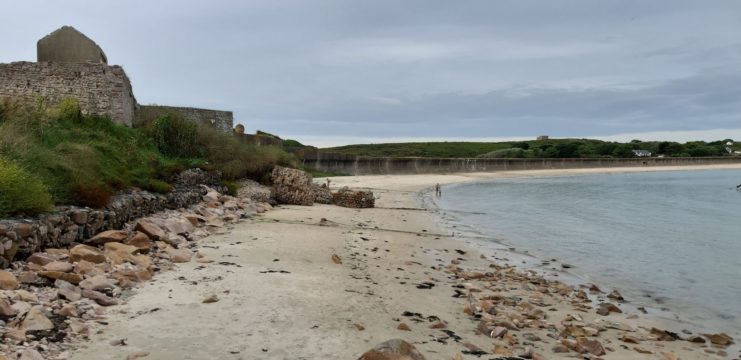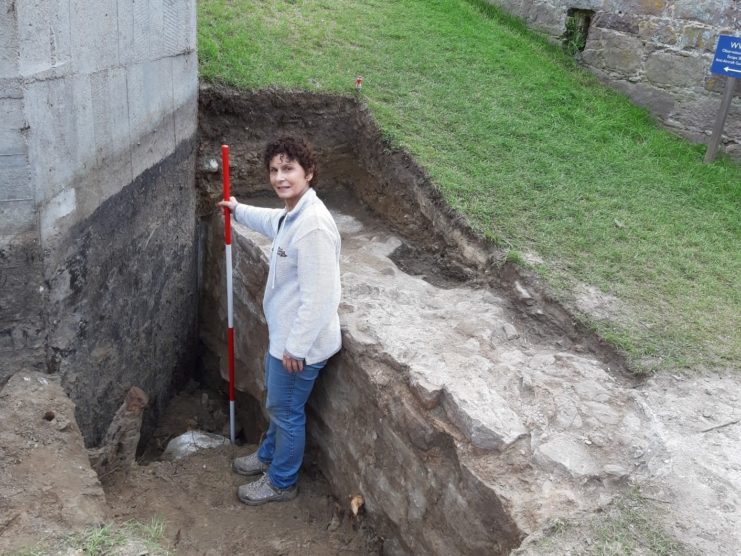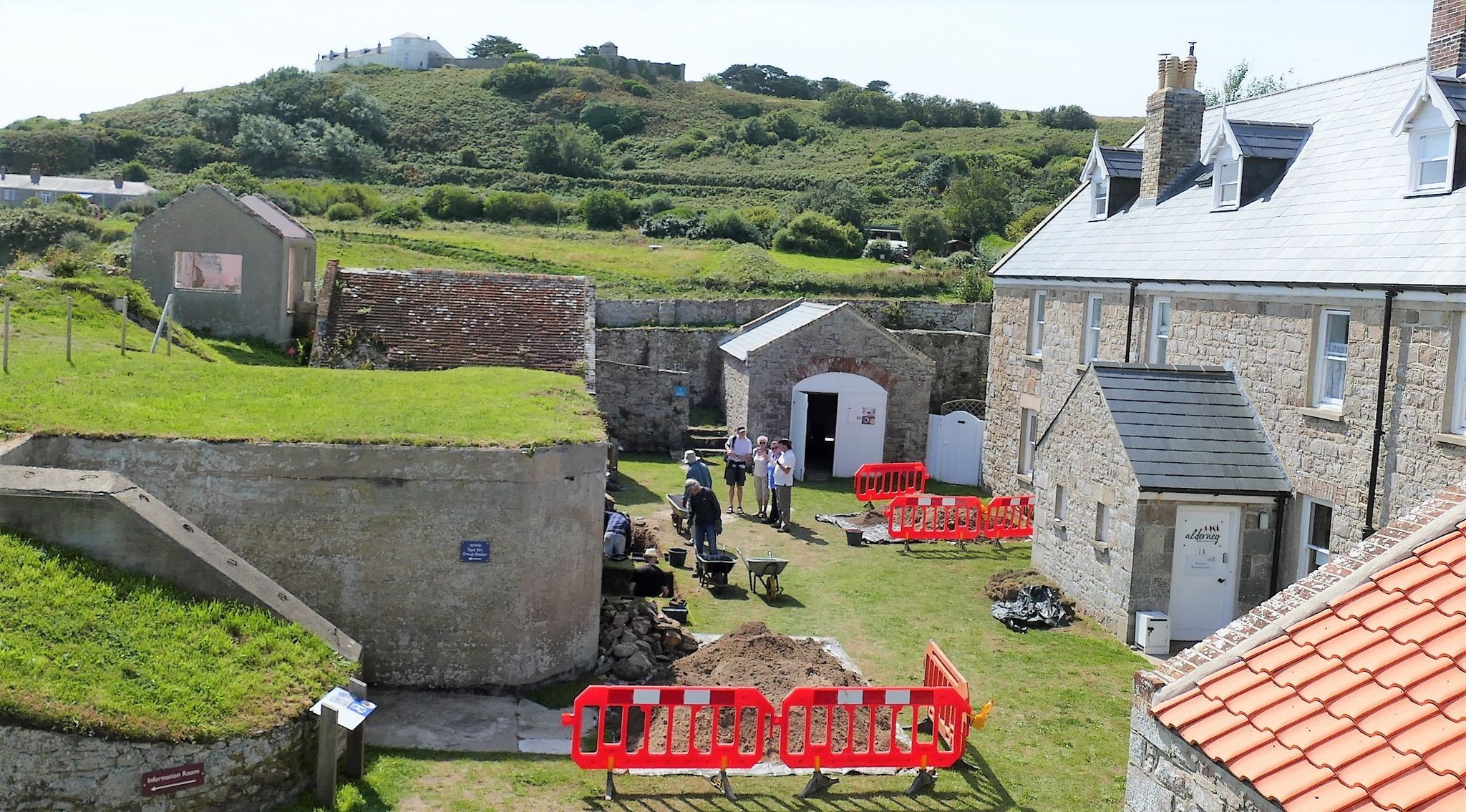A German bunker that was discovered on the island of Alderney is also the site of a recently rediscovered Roman courtyard and other fascinating multi-period discoveries. The bunker, located within the Channel Islands between England and France, was built directly inside a Roman fort.
The island, which has been inhabited for an estimated 1,700 years, is the site of a Roman tower that is believed to have been built to protect a nearby Roman settlement. It may also be the site of the most well-preserved military structure of the Roman period.
The 26-foot tall Roman tower is estimated to have been built in the 4th century C.E. and features 10-feet-thick walls. The tower is still considered one of the most well-preserved Roman forts in Britain according to ArtNews.
It’s believed that the original Roman Fortification was approximately 320 sq feet and featured rounded corners where towers were built. While many of the structure’s outer walls are still standing, only fragments of the original tall tower remain. The tower is similar in design to Roman signal stations that were built in Yorkshire, according to Current Archaeology.

The BBC says the site “has been occupied for about 1,700 years, containing the remains of structures from the medieval, Tudor and Napoleonic eras built on top of each other.”
The British are believed to have refurbished the Roman fort in 1793, leveling off the tower walls in the process, according to Heritage Daily. When the German’s invaded the island it appears they inserted a Type 501 bunker “neatly between the tower ruins, using the north and south internal walls effectively as shuttering to pour their concrete, according to Dr. Jason Monaghan, who is helping lead the excavation efforts.
Sadly, in completing their work on the bunker, the German’s “dug out the entire interior of the tower to do this, destroying any evidence for internal structures or floors” Monoghan told the BBC.
As German forces saught strategic defensive and offensive positions during WWII they converted the Roman Fort into “Resistance Point Piratenschloss (Pirate’s Castle). The Nunnery’s position to Longis Bay, a natural harbor, was considered a strategic stronghold for the Nazis. The location is just 60 miles off the coast of England and approximately 10 miles from France.

From 1940 until 1945, Alderney was the only British territory to be controlled by the Nazis. Along with the bunker, the Nazis used the island to house several concentration and forced labor camps including “Lager Norderney located at Saye, Lager Helgoland at Platte Saline, Lager Sylt near the old telegraph tower at La Foulère and Lager Borkum, situated near the Impot,” according to Wikipedia. Two of the camps on the island were the only Nazi concentration camps to ever be located on British soil.
The island’s original residents were fully evacuated during the war and Hitler ordered nearly 6,000 prisoners to the small island by 1942. The forced laborers who were brought to the island were forced to build anti-tank bunkers, air raid shelters, concrete barricades, and other features that could help fortify the island. Hitler ordered that the island become an “impregnable fortress.”
Much of the island’s history during the Nazi occupation was lost after the war. German officers who were left in charge of the facilities on the island burned the camps to the ground and destroyed as many records as possible. It wasn’t until May 16, 1945, that British forces liberated the island. In December 1945, residents were allowed to return to Alderney.
In 2021, the team at Dig Alderney discovered a courtyard they had been looking for over the past several years.
An update on Dig Alderney’s Facebook page says, “We’ve been looking for it for years; Trenches 2,3,5,6, and 8 came up blanks. But this year we have it in Trench 6E. Once we have reviewed the notes made on site we may also be able to confirm it also survives in 6B…”

Dig Alderney made some excellent progress from August 19 through August 29 and they plan to return next year to further excavate the site. The focus for the Spring 2020 excavation will be the medieval and Tudor components that still remain to be rediscovered. They will also examine nearby Iron Age and Roman ruins.
Visitors to the island can still see part of the Roman Tower that remains on display to the public. The Nunnery Heritage Site is also quickly becoming a visitor attraction that houses education rooms, exhibits, and more.
If you’re interested in the progress of all excavation and restoration efforts currently underway and completed in Alderney, the States of Alderney has put together an official government document that showcases those efforts along with some interesting historical findings. You can view the full document from the States of Alderney here.
Given the complex multi-period history of the fort, it will likely be years before excavation efforts on the island are fully completed.
